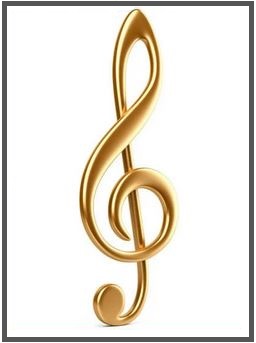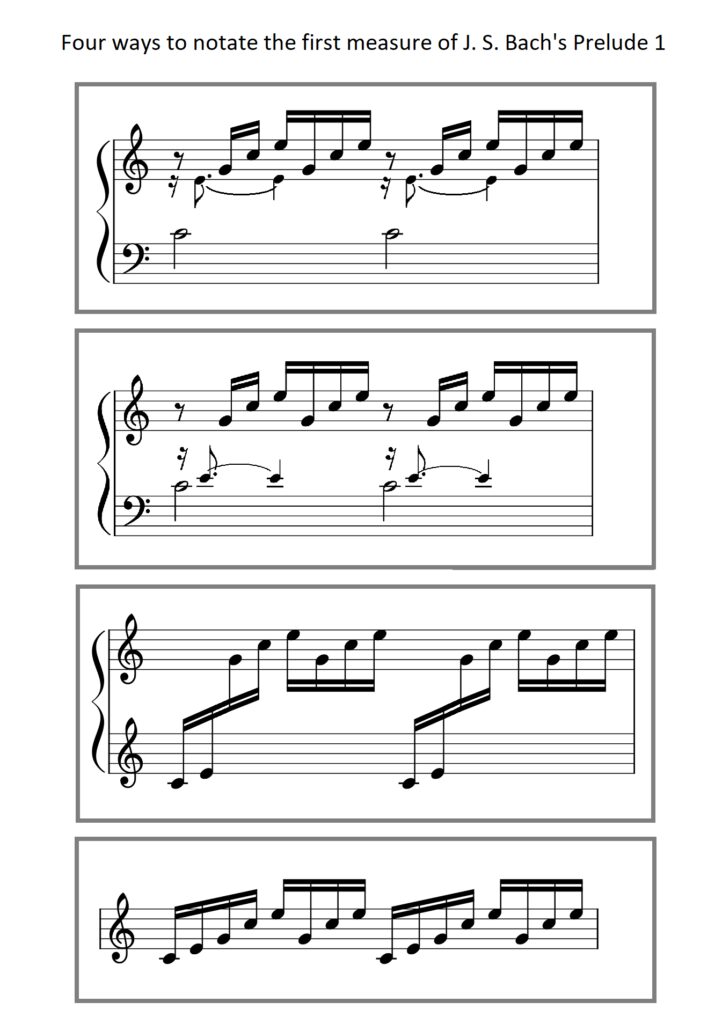 Learning to sight-read in two clefs is a complicated task. All you can do is take the long view, learn how to read a small area of the staff well, and expand outward from there.
Learning to sight-read in two clefs is a complicated task. All you can do is take the long view, learn how to read a small area of the staff well, and expand outward from there.
The grand staff spans more than four octaves. Divide it into sections. Learn to read the ledger lines above and below the staff separately. Learn to recognize as many chord and scale shapes as you can. It takes time, and you have to stay in practice. Learning to read a piece of music in staff notation is often a lot more complicated than either the technique or the theory.
The grand staff has a couple of annoying quirks. For instance, middle C is on a line, but the C above that is on a space. The C above that is on a line. As you play octaves below middle C, you get the same alternating lines and spaces. It’s the same for all 12 notes. Part of the trick to reading the grand staff is learning how to read each of the twelve notes of the chromatic scale as either a line or a space.
Another feature is that some key signatures refer to particular white keys, which are usually “natural” notes, as “sharps.” In the key signature for C# major, F natural is written as E#, and C natural is written as B#.
There are several confusing notation conventions which are commonly used in written music, especially in piano music. Some of these confusing notation methods can be simplified.
The diagram below shows four different ways of notating the first measure of J.S. Bach’s Prelude One. Depending on which sheet music you buy, it might be notated in any one of the four ways shown. Bach’s hand-written manuscript most resembles the top frame, except that Bach wrote in C soprano clef in the upper line instead of treble clef.
Reading rhythms on piano, guitar or bass is more complicated than reading rhythms for drums, because drums are all attack. Drummers are usually not concerned with the duration of notes. Piano, guitar, and bass music has to account for the precise durations of individual notes.
Outside of competitions, musicians take liberties with the exact duration of notes. Lots of guys playing for union scale take the attitude that if the conductor doesn’t say anything, then it must be okay. How you play note durations is a basic element of interpreting music. Directing the durations of notes is a part of conducting. That’s why Scheherazade sounds a little different depending on whether it ’s conducted by Pierre Monteux, Leopold Stokowski, or Konstantin Ivanov.
Here is one shortcut for reading rhythms. You can sometimes get away with not counting the rhythmic values of notes that sustain to the end of a measure. Count the attacks and rests, but don’t count the durations in between. When the last note is a combination of tied eighths and sixteenths, you don’t have to check the arranger ’s arithmetic. Just hold the last note to the end of the measure, and pick up counting from the next downbeat.
You can also apply this shortcut to notes that tie across the barline. In the top two examples of Prelude 1, you can see that the left hand is playing two notes a sixteenth apart, starting on the downbeat, and holding until the 3rd beat of the measure. You don’t have to count the tied values to make sure they add up. The only thing you need to know is that you repeat the same two notes again on the 3rd beat of the measure.

